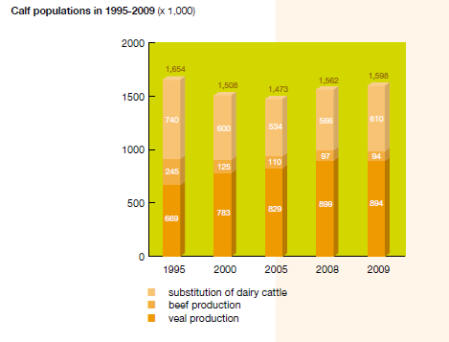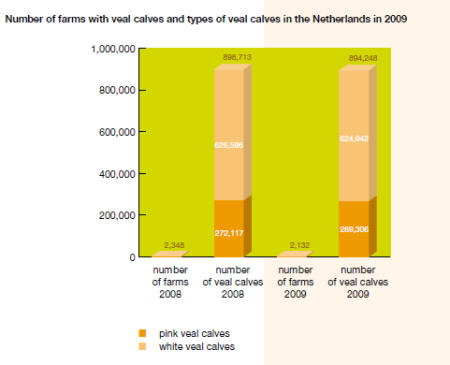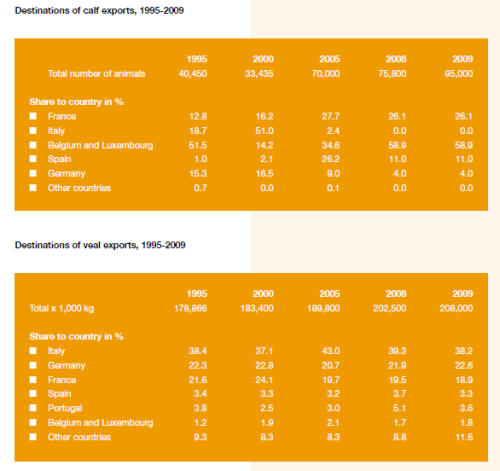



Veal Calves In The Netherlands
Veal is produced in the Netherlands according to stringent regulations. In 2008 the existing IKB quality scheme for veal calves was updated. IKB stands for Integrale Keten Beheersing – total surveillance of animal production. There are two separate schemes for veal calves: one for animals producing white meat and one for those yielding rosé meat.Almost all the Dutch calf farmers comply with the IKB regulations. Through these schemes, the veal-calf sector provides guarantees for animal welfare and animal health, food safety, and meat quality. Compliance with IKB also implies compliance with the European hygiene regulations for food and feed.
IKB calf farmers have a contract with a single veterinarian and have a medical treatment plan. Important aspects of the IKB programme are careful and rational use of antibiotics and their registration.
Animal welfare has always been a key concern in the Dutch calf farming sector. The Netherlands was the first country in Europe where the calf sector introduced group housing of its own accord. Since 2009 all veal sold in Dutch supermarkets is awarded a ‘star’ by the ' Beter Leven' (Better Life) quality mark of the Dutch Society for the Protection of Animals. Veal granted this quality mark complies with extra high demands placed on animal welfare.
Higher production
Production of veal in the Netherlands increased last year. According to provisional figures, production reached 233,000 tonnes. That is two per cent more than in 2008. The majority of Dutch production originates from animals younger than eight months old. The share accounted for by this category in the total production volume was 74 per cent last year. The remaining 26 per cent originates from calves aged between eight and twelve months. More new born calves imported More new born calves were imported last year too. In total more than 830,000 calves were imported; an increase of almost eight per cent relative to 2008. More calves were imported from Ireland and Poland in particular. Germany remained the most important supplier of calves with a share of 46 per cent. Imports from the United Kingdom ceased as the Dutch veal sector decided to stop importing calves from the UK because of the presence of tuberculosis in British herds.
Rise in exports
The Netherlands is the major exporter of veal in the world. Veal exports increased marginally last year compared to the previous year. Approximately 207,000 tonnes of veal was exported. That is 2.5 per cent more than in 2008.
For decades, the vast majority of the meat has been exported to the same three countries – Italy, Germany and France. More than 80 per cent of the total export is destined for these markets. The main importer remained Italy with a share of 40 per cent, followed by Germany and France each with a share of 20 per cent in Dutch exports of veal. However, the veal sector is making efforts to serve as many markets as possible worldwide. A positive point was gaining access again to markets in several countries in the Middle East.
Stable prices, but less fluctuation
Prices for veal calves in 2009 were at about the same level as in 2008. However, the fluctuations were far smaller than in that year. In 2008 the reference price fell from € 5.50 at the beginning of the year to € 3.30 in the early autumn. In 2009 the reference price (a weighted average of the prices for red and white and black and white animals) was between € 4.00 and € 4.50 for the majority of the year. The price of new born calves last year was at a far higher level than in 2008. The average reference price increased by 17 per cent. This was set off by lower feed prices, including for skimmed milk powder, than in 2008.
Slight increase in veal consumption
Total domestic consumption of veal showed a slight increase in 2009. Per capita, consumption remained stable at 1.7 kg.





